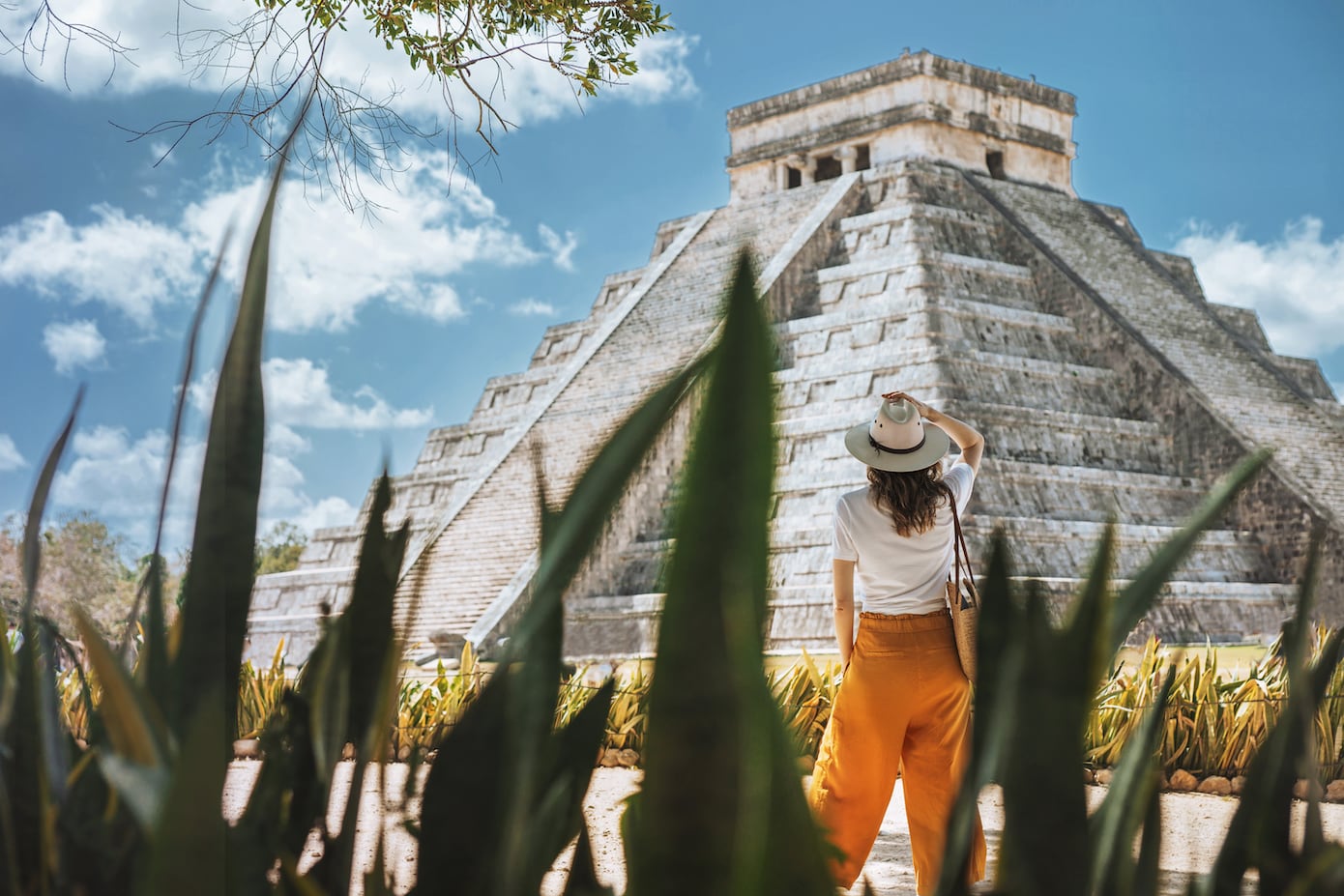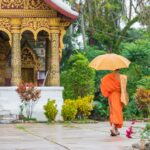Before the Spanish conquistadors arrived in Mexico, the Maya possessed one of the greatest civilizations of the Western Hemisphere in the pre-Columbian era. They occupied a large territory in southern Mexico where they developed large cities, practiced slash and burn agriculture while using advanced techniques in irrigation and terracing, created a high form of hieroglyphic writing, and implemented sophisticated calendrical and astronomical systems.
The ancient Maya quarried immense quantities of building stone (usually limestone) that they used to create some of the most immense and intricately carved temples, pyramids, palaces, and courts the world has ever known. Remnants and ruins of these edifices remain today.
If you are planning a trip to Mexico, consider visiting one (or two, or three) of these amazing glimpses into the past. Some you can climb, others you can bike through, and behind one of them, you can swim in the ocean. Standing in front of these stone structures is both inspiring and humbling.

Chichen Itza
Chichen Itza is probably Mexico’s most famous set of ruins. Its image has been reprinted countless times. Located in the Yucatan Peninsula, this ancient town is a result of a large and diverse population, which is reflected in the varying architectural styles and techniques found throughout the site. It’s known as one of the best examples of Mayan-Toltec civilization in the area. It was settled by the Maya people in the early to mid-400s. A half-century later, the town was conquered by the Toltecs and additional buildings were erected. The city is believed to have fallen somewhere around 1440 A.D., and was then left abandoned in the jungle for 500 years until modern-day excavations began.
Chichen Itza’s ruins give visitors an eye into an ancient life. The most famous building is the Temple of Kukulcan, a towering step-pyramid in the center of the city. At one time, visitors were able to climb up this stunning ruin, though wear and tear eventually led to closed access. Still, Chichen Itza receives over two-and-a-half million tourists each year and is one of Mexico’s most-visited archeological sites.

Tulum
Tulum’s beautiful beachside ruins have become an increasingly popular attraction as tourism in the town has exploded. These Mayan ruins, located in the Riviera Maya and just a 10-minute drive or 30-minute walk from Tulum town, date back to the 13th century. Built directly on the cliffs and up against the ocean, Tulum back then was an important port city, trading precious stones. The most popular ruins here is the cliffside Castillo, the largest and most impressive structure. The rest of the site is filled with mostly destroyed remnants of buildings (there is ongoing rehabilitation work), and the views, especially at sunrise, are breathtaking.



Coba
At its peak over 1,500 years ago, Coba was one of the largest cities in Mayan history. Covering over 50 miles of dense jungle, it was home to more than 50,000 Mayans and what archeologists now believe to be one of the most important sets of ancient ruins in the Yucatan. Today, it is a very impressive set of ruins, and it’s one of the remaining sites you are allowed to climb to the top Coba’s main pyramid ruins, Nohoch Mul. Once atop, the 180-degree views over the jungle and Coba site itself are breathtaking. After the climb, it is possible to rent a bike, and then cycle through the rest of the site.
Palenque
Palenque is a romantic favorite set deep in the jungle of Chiapas. The city came to its peak between 500 to 700 A.D. and, at one time, had thousands of buildings. Today, over 1,400 buildings remain with only around 10 percent having been explored. The ruins themselves are well-preserved and are one of the best sets that illustrate the Mayan’s classical period. Well-preserved hieroglyphic inscriptions are found within the Temple of the Inscriptions, a funeral tomb for the seventh-century ruler of Palenque, K’inich Janaab’ Pakal.
Calakmul
20 miles from the Guatemalan border, is the ancient Mayan city of Calakmul. While most of the ruins on this list are easily accessible, Calakmul has a more remote location deep in the jungle of the Yucatan Peninsula. Like Coba, Calakmul is thought to have a large population of about 50,000 people. It’s believed that construction of this huge city started around 550 B.C. Over 6,700 buildings have been discovered here, with several pieces remaining mostly intact. Some of the intricately carved stone slabs still have their original pigmentation. You can climb its steep steps for stunning, unforgettable views over the surrounding jungle-scape.
Ek Balam
Yet another set of ruins found in the Yucatan Peninsula, Ek Balam, meaning “black jaguar” in Mayan, is a tourist-favorite and thought to possibly be the seat of the Tlalol kingdom. This ancient Mayan city peaked around the late Classical period between 600 to 850 A.D. In addition to housing numerous well-preserved sculptures, Ek Balam is known for the preserved plaster tomb of king Ukit Kan Lek Tok. For sweeping views over the Riviera Maya (and out to Coba on clear days), climb the Acropolis pyramid. Ek Balam is a small city with only 45 buildings, but they are remarkably intact compared to other Classical-period structures like Coba.



